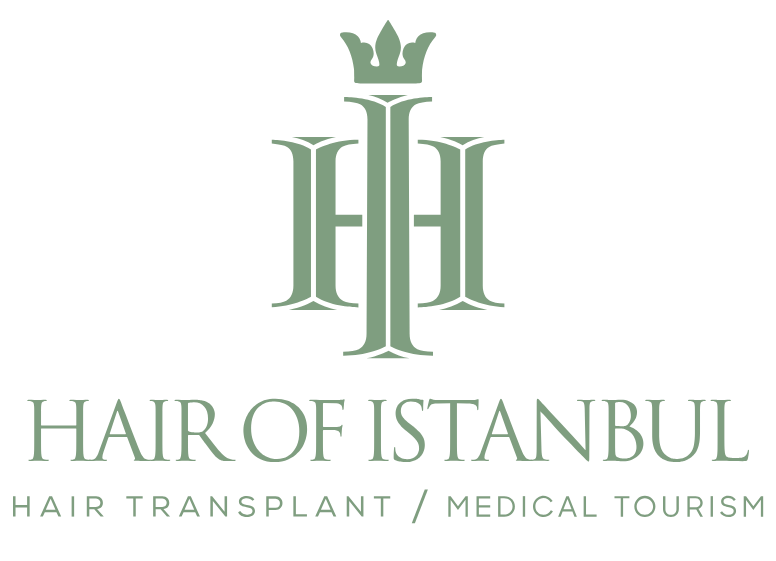Schwellungen nach einer Haartransplantation: Wie kann man sie verhindern und reduzieren?
Undergoing a hair transplant can be a transformative experience, offering new hope and confidence. However, as with any surgical procedure, it comes with its set of challenges, one of the most common being post-operative swelling.
This natural response of the body can be unsettling for many, raising questions about its management and reduction. In this comprehensive guide, we delve into effective strategies for mitigating swelling, ensuring your journey towards a fuller head of hair is as comfortable and worry-free as possible.
From practical tips to natural remedies, we cover all you need to know to navigate this aspect of hair transplant recovery with ease. Join us as we explore these essential insights, paving the way for a smoother, more reassuring post-transplant experience.
When Does Swelling Start After Hair Transplant?
Swelling after a hair transplant procedure is commonly expected and varies from person to person. Not everyone experiences swelling to the same degree; some may find the postoperative period smoother with minimal swelling. Typically, swelling might begin to appear around the third day following the operation. Under normal circumstances, this swelling usually subsides within 3 to 4 days. Therefore, it is anticipated that swelling should decrease about a week after the surgery.
Should the swelling persist beyond a week, it’s advisable to consult your doctor. Prolonged swelling isn’t common, and a medical professional can provide guidance and reassurance. It’s important to monitor the healing process and seek advice if the expected recovery trajectory deviates.
How Much Swelling Is Normal After Hair Transplant?
Swelling after a hair transplant can vary in extent, predominantly appearing around the forehead and the eyelids. [2]
For some individuals, the swelling is relatively mild and doesn’t significantly impede daily routines. Others might experience more pronounced effects.
To categorize the severity of swelling, a scale is often used:
| Degree 0 | No swelling |
| Degree I | Swelling in the upper forehead |
| Degree II | Swelling in both upper and lower forehead |
| Degree III | Swelling around the eyes and cheeks (periorbital edema) |
| Degree IV | Black eyes (severe swelling) |
*Even in severe cases, such as those rated at Degree III or IV, where the eyes may become difficult to open, the swelling is typically self-limiting and will resolve naturally.
When Is Swelling The Worst After Hair Transplant?
The peak of swelling, particularly around the forehead and eyelids, usually occurs between the 2nd and 6th day after a hair transplant. The severity of this swelling can vary, with some patients experiencing intense swelling that impedes their ability to open their eyes. [3]
In rare instances, this swelling is accompanied by ecchymosis (black eyes). It’s important for patients to be aware of these potential peak swelling periods to better prepare and manage their post-operative recovery.
Also Read: Does Melatonin Cause Hair Loss? Truth and Rumors!
Areas That May Swell After Hair Transplant
Swelling or edema is a common side effect of hair transplant surgery. This swelling typically manifests in the forehead area, but in rare instances, it can also affect the eyelids. Here’s a brief overview of the areas that might experience swelling:
Head
The scalp may exhibit mild swelling, especially near the transplanted area, as it reacts to the surgical intervention.
Donor Area
This is where hair follicles are harvested for the transplant. Swelling here can be more noticeable due to the extraction process.
Forehead
The most common site for swelling, the forehead may show visible signs of edema post-surgery.
Face
In some cases, swelling can extend to the facial area, though this is less common than forehead swelling.
Eye
Rarely, swelling can spread to the area around the eyes, potentially causing discomfort or temporary vision obstruction.
Neck
Swelling may occasionally extend to the neck area, although this is relatively uncommon.
How to Prevent It?
Preventing swelling after a hair transplant involves a few key steps, which can be summarized in the following table: [4]
| Elevate Your Head | Keep your head elevated while sleeping to reduce swelling. |
| Avoid Bending | Steering clear of bending down helps minimize blood flow to the head, reducing swelling risk. |
| Apply Cold Compress | Use cold compresses to soothe the area and mitigate swelling. |
| Follow Care Instructions | Adhering to the surgeon’s post-operative care guidelines is crucial for reducing swelling and promoting healing. |
Also Read: Can Dimethicone Cause Hair Loss? Do You Need to Worry?
How to Reduce It?
Reducing swelling effectively after a hair transplant involves a combination of practical steps. The table below summarizes these key methods: [5]
| Hydration: | Drinking plenty of water helps reduce swelling by facilitating the removal of fluids from the body. |
| Regular Forehead Massages: | Gentle massages on the forehead can stimulate blood flow and aid in reducing swelling. |
| Wearing a Headband: | A headband can provide support and help in minimizing swelling around the surgical area. |
| Applying Ice Packs: | Ice packs can be used to soothe and reduce swelling, especially in the first few days post-surgery. |
| Sleeping Elevated: | Maintaining a high head position while sleeping helps in reducing blood flow to the swollen area, thus decreasing swelling |
What Medication Is Used To Reduce Swelling After Hair Transplant?
To reduce swelling after a hair transplant, medical professionals often recommend medications with specific active ingredients. These typically include anti-inflammatory agents and sometimes mild pain relievers.
It’s essential to follow the surgeon’s advice on medication, as they will prescribe what’s most appropriate based on individual patient needs and the specifics of the procedure.
How Do You Reduce Swelling After Surgery Naturally?
Reducing swelling naturally after surgery involves several straightforward yet effective methods, as outlined in the table below:
| Adequate Rest | Ensuring sufficient rest allows the body to heal and naturally reduce swelling. |
| Healthy Diet | A balanced diet rich in vitamins and anti-inflammatory foods can aid in reducing swelling. |
| Gentle Exercise | Light activities like walking can promote blood circulation, helping to reduce swelling. |
| Avoiding Salt | Reducing salt intake helps prevent fluid retention, thereby decreasing swelling. |
| Herbal Remedies | Certain herbs, like arnica, have properties that can aid in reducing swelling naturally. |
*Incorporating these natural approaches can help minimize swelling and promote a smoother recovery process.
What Foods Reduce Swelling After Surgery?
There are a few foods known to be good for bloating: [6]
- Ginger: Known for its anti-inflammatory properties, ginger can help reduce swelling and pain post-surgery.
- Pineapple: Contains bromelain, an enzyme that aids in reducing inflammation and swelling.
- Turmeric: This spice has curcumin, which is effective in managing inflammation and swelling.
- Berries: Rich in antioxidants, berries can help reduce inflammation and aid in recovery.
- Leafy Greens: Vegetables like spinach and kale are high in vitamins and minerals that support healing and reduce swelling.
Incorporating these foods into your diet after surgery can help in managing swelling effectively.
Also Read: Do Statins Cause Hair Loss? Here’s What You Need to Know!
How Long Does Swelling Last After Hair Transplant?
Swelling after a hair transplant typically lasts from 2 to 7 days post-operation. This duration can vary based on individual healing processes and the extent of the surgery. It’s important for patients to follow post-operative care instructions to help reduce the duration of swelling.
FAQ
Is Swelling Permanent After Hair Transplant?
Swelling following a hair transplant is not permanent. Research and patient experiences indicate that it is a temporary response of the body to the surgical procedure.
With proper care and following the surgeon’s instructions, the swelling will subside, usually within a few days after the surgery.
What do Reddit users say about swelling after a hair transplant?
Based on comments from various Reddit users who have undergone hair transplants, swelling is a common and expected side effect of the procedure.
Most users report that the swelling peaks a few days post-operation and gradually subsides. Personal experiences shared on Reddit emphasize the importance of following post-operative care instructions to manage and reduce swelling.
Also Read: How Many Hair Transplants Can a Person Have?
CONCLUSION
As we conclude this informative journey on managing and reducing swelling after a hair transplant, it’s crucial to remember the importance of choosing the right clinic and following expert guidance. At Hair of Istanbul, we prioritize patient comfort and effective recovery methods.
Our dedicated team ensures that each individual receives tailored care, specifically designed to mitigate swelling and enhance the healing process. With state-of-the-art facilities and a deep commitment to patient well-being, Hair of Istanbul stands as a testament to quality and care in hair transplant procedures.
Trust in our expertise to guide you through a smooth and successful recovery, ensuring your experience is as positive and rewarding as the results themselves.
References:
- [1-2] Rebecca M, Aug 18, 2022 – How to Prevent and Reduce Hair Transplant Swelling – https://wimpoleclinic.com/blog/how-to-prevent-and-reduce-hair-transplant-swelling/
- [3] Abbasi Gholamali, Unknown Date – Hair Transplantation: Preventing Post-operative Oedema – https://www.ncbi.nlm.nih.gov/pmc/articles/PMC2956963/
- [4-5] Erika Gucsi, Apr 3, 2019 – How to Reduce Swelling After Hair Transplant – How to Reduce Swelling After Hair Transplant – https://www.hairpalace.co.uk/swelling-after-hair-transplant/
- [6] Adam Levy, Mar 26, 2023 – 10 Nutrient-Packed Foods to Aid Recovery After Plastic Surgery – https://www.coloradomicrosurgery.com/blog/10-nutrient-packed-foods-to-aid-recovery-after-plastic-surgery




